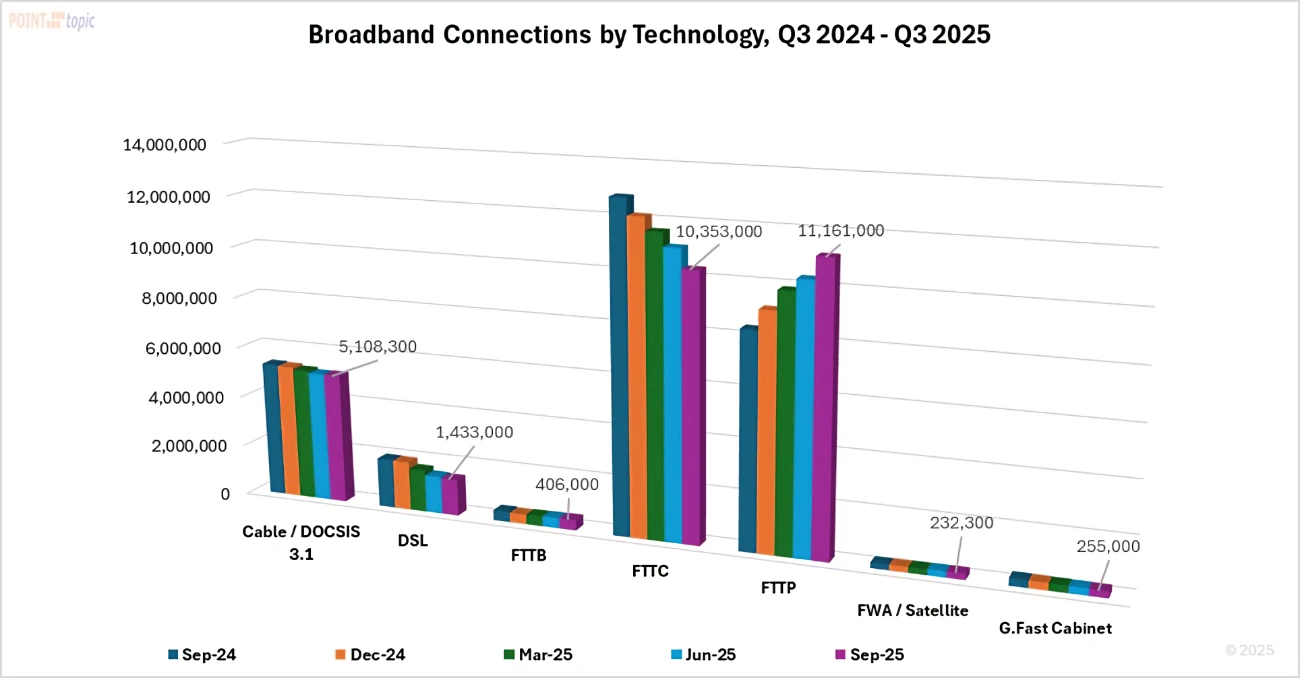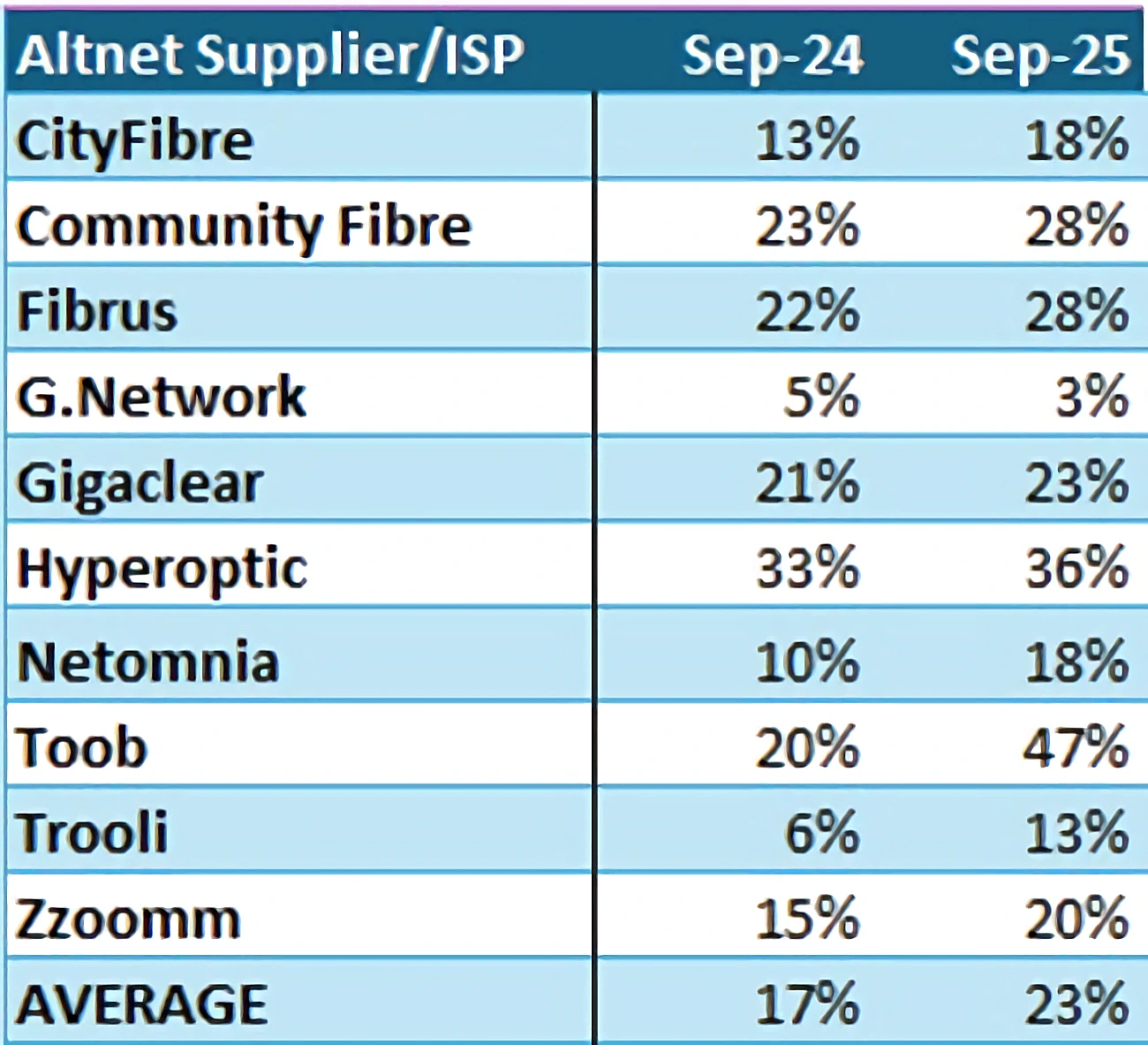Original article ISPreview UK:Read More
Network access provider Openreach (BT) has provided an important update on the planned (pilot) closure of their next two legacy exchanges in Ballyclare (9,500 premises in N.Ireland) and Kenton Road (9,500 premises in London), which were originally due to be switched off on 30th November 2025 but will now remain open a bit longer to help the remaining users migrate.
Just to recap. The operator is currently in the early pilot stage of closing around 4,600 of their 5,600 UK exchanges. This is occurring because only c.1,000 of these are needed to provide nationwide coverage of modern “fibre broadband” services (FTTC / SOGEA, FTTP etc.) – the Openreach Handover Points (OHPs or “Super Digital Exchanges“). The rollout of full fibre (FTTP) technology, combined with the retirement of copper lines and legacy services (ADSL, WLR, PSTN etc.), will soon make it economically unviable to support both the old and new exchanges.
The operator has thus long since developed a gradual plan for closing the thousands of older exchanges – known as the Exchange Exit Programme, which starts with an initial pilot of 3 exchanges and then extends to a closure of 105 “priority exchanges” by 2030 (i.e. taking place in four phases), with the rest then following through the early 2030s. The tentative dates for these have already been announced (here).
Closing an exchange and migrating affected customers remains a highly complex process, which typically takes around 4-7 years (depending upon the complexity of each exchange) – starting with a Stop Sell of old products and eventually ending with everything being switched off. Only after that do Openreach and ISPs remove their physical kit, which can take a few short months.
What’s happened so far?
Earlier this week we reported that the first of three pilot exchange closures for this programme, Deddington (serving c.1,800 copper lines), had finally shut its doors a little ahead of schedule (here) – new digital lines are now being served and managed by the nearby Banbury Exchange (OHP). None of this is surprising, as Deddington was also one of the first UK areas to go fully FTTP.
By comparison, the next two pilot exchanges – Ballyclare and Kenton Road – are much larger and more challenging to address, and that’s intentional. Openreach needs to confront the hardest areas now and establish the best approaches for dealing with them, which will then inform their solutions when it comes to retiring thousands more in the future. Both exchanges were originally due to shut their doors on 30th November.
However, much as we reported last weekend (here), both of these exchanges currently still have some active consumer broadband and phone lines (i.e. they’ve not been migrated yet) – not many, but we were told is was “enough to hinder the closure”. Some other lines are also in the process of being migrated, but won’t all be shifted by the closure date. The operator has thus been busy working closely with ISPs, Ofcom, the Government (DSIT) and the Office of the Telecoms Adjudicator (OTA) to find solutions.
Openreach has also been working with retail providers in an effort to try and identify what kind of users theses are (they’re currently investigating that alongside retails providers), since nobody wants to disconnect customers, particularly if some of them may turn out to be classified as “vulnerable“, or part of any other high risk or critical infrastructure (CNI) group.
What’s the latest update?
According to the latest private briefing on all this, which was posted on Wednesday, Openreach are still busy trying to identify whether any of those who haven’t yet been shifted off the exchange are “vulnerable” users. The operator is currently still reviewing their position over whether or when to cease consumer customers and are, in the meantime, continuing to work with everyone involved to exit the pilot exchanges safely.
“Whilst we continue to work this through, we’ve now confirmed with industry that where CPs [Communication Providers] have failed to migrate consumer customers’ assets prior to the deadline, Openreach will NOT cease on 1st December 2025, but services will remain subject to original termination notices – we will keep CPs informed of any future plans to cease these lines,” said a spokesperson to ISPreview.
In short, the exchanges will not now be closing this weekend as originally planned and Openreach are allowing more time to find solutions for the remaining lines, although they’ve yet to agree a new timetable for closure with providers. In the meantime, they’ve advised affected broadband and phone providers to continue trying to migrate their consumer customers to digital alternatives, including full fibre (FTTP) and SOGEA (FTTC).
As we pointed out in the prior update, business lines aren’t so lucky, with Openreach making clear that disconnection will be the outcome: “If a CP fails to cease and/or migrate the services by the end of 30 November 2025, any live business assets which do not have an inflight order or have not been agreed as critical life impacting services, will be ceased by Openreach from the 1 December 2025“.
Hopefully we’ll learn what the revised switch-off dates will be in the near future.




